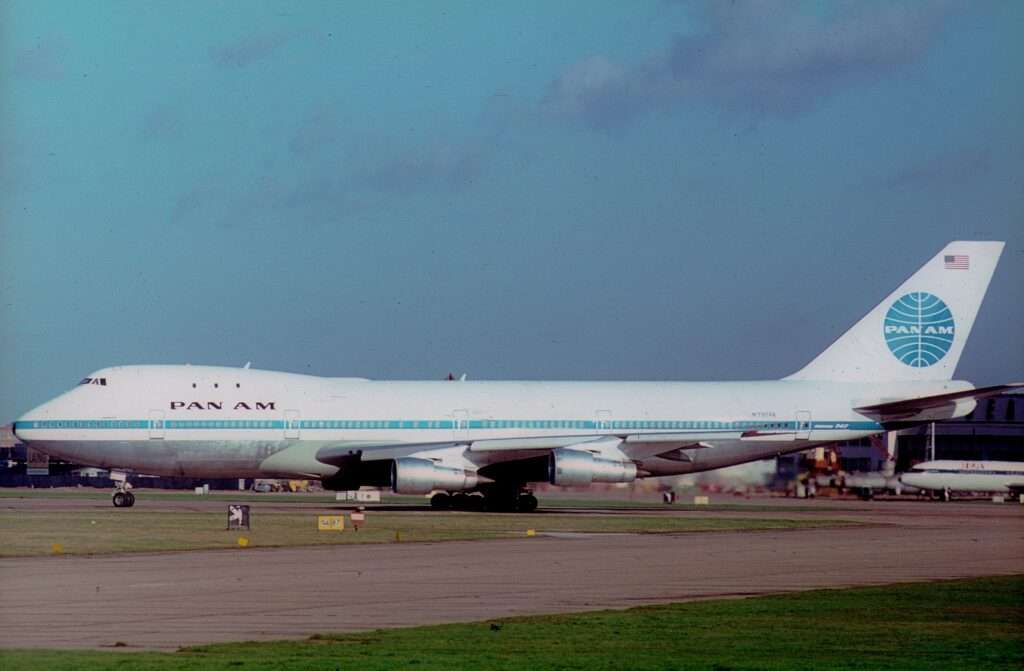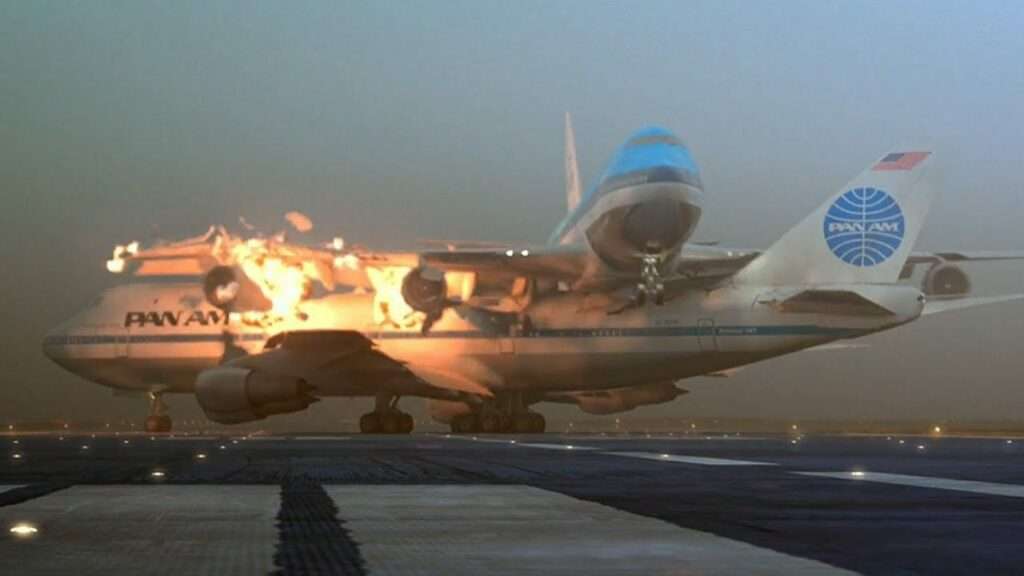The idyllic skies above Tenerife Airport, a volcanic island paradise, were anything but serene on March 27, 1977. Today marks 47 years since the tragic event.
A confluence of events led to the deadliest aviation disaster in history.
Furthermore, this forever etched a mark on the memories of those involved and the aviation industry as a whole.
This tragedy, involving two Boeing 747s – KLM Flight 4805 (KL4805) and Pan Am Flight 1736 (PA1736) – claimed the lives of 583 passengers and crew.
A Perfect Storm of Events at Tenerife Airport in 1977


The seeds of disaster were sown earlier that day.
A bomb threat forced the diversion of several flights, including KL4805, to Los Rodeos Airport (since renamed Tenerife North Airport).
Thick fog shrouded the island’s usual landing site, Tenerife South Airport, rendering it unusable. Los Rodeos, a smaller airport not equipped to handle the jumbo jets, became a congested hub for stranded aircraft.
KL4805, a KLM Boeing 747, landed safely at Los Rodeos.
However, PA1736, a Pan Am 747 carrying mostly vacationers returning to the US, was still airborne, waiting for clearance to land.
A series of miscommunications and misunderstandings began to unfold.
Due to limited space and the fog, air traffic control (ATC) instructed arriving aircraft to hold short – a critical instruction requiring a plane to stop before the runway entrance.
A Tangled Web of Communication
Meanwhile, on the ground, visibility remained poor.
KL4805 was mistakenly cleared for takeoff from the runway by the ATC, while PA1736, still unaware of the situation, received a taxi instruction that could be interpreted as clearance to enter the runway.
Captain Jacob Veldhuyzen van Zanten, a highly respected pilot at the helm of KL4805, grew impatient with the ground delays.
He initiated a takeoff roll without receiving explicit confirmation – a fatal decision.
At the same time, Captain Victor Grubbs, under the command of PA1736, was slowly taxiing down the runway, relying on visibility and taxiway lights for navigation.
A Moment of Horror and the Inevitable Collision
The catastrophic climax arrived in a matter of seconds.
As KL4805 accelerated down the runway, PA1736 emerged from the fog. Both crews realized the impending collision in a horrifying instant.
Captain Veldhuyzen attempted to veer off the runway, but it was too late.
The KLM 747 clipped the Pan Am plane, its undercarriage shearing off the Pan Am’s upper fuselage and severing the tail section.
Both aircraft erupted in flames, spewing burning fuel across the runway.
The ensuing inferno consumed both planes. The impact zone became a horrific scene of mangled metal and human remains.
The fire was so intense that rescuers arriving on the scene initially assumed there would be no survivors.

However, miraculously, 61 people on board PA1736, mostly passengers seated at the front of the plane away from the impact, managed to escape the inferno.
A Legacy of Loss and Lessons Learned from Tenerife…
The aftermath of the disaster was a period of investigation and reckoning.
The accident report identified a complex interplay of factors contributing to the tragedy.
The bomb threat, the congested airport, poor visibility, and communication breakdowns between the crew and ATC all played a role.
Captain Veldhuyzen’s decision to initiate a takeoff without explicit clearance was deemed a critical error.
The Tenerife disaster had a profound impact on aviation safety regulations.
New procedures were implemented regarding crew communication, runway hold short procedures, and the use of standardized phraseology.
Additionally, advancements in ground radar technology were prioritized to improve situational awareness for both ATC and pilots in low-visibility conditions.
The memory of the Tenerife disaster serves as a stark reminder of the fragility of human life and the importance of clear communication and adherence to safety protocols in aviation.
It is a tragedy etched into aviation history, a testament to the constant need for vigilance and proactive measures to prevent such catastrophes from ever happening again.

Click the banner to subscribe to our weekly newsleter.

Click the photo to join our WhatsApp channel so then you can stay up to date with everything going on in the aviation industry!









